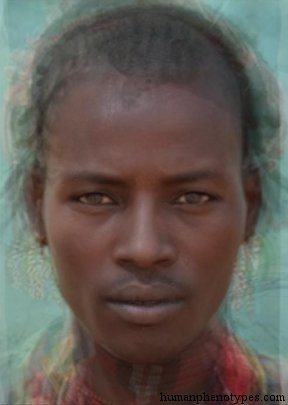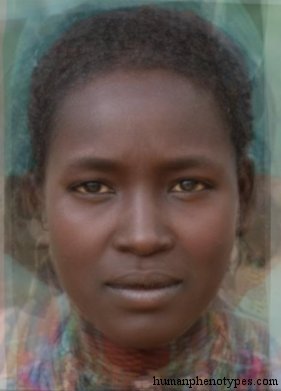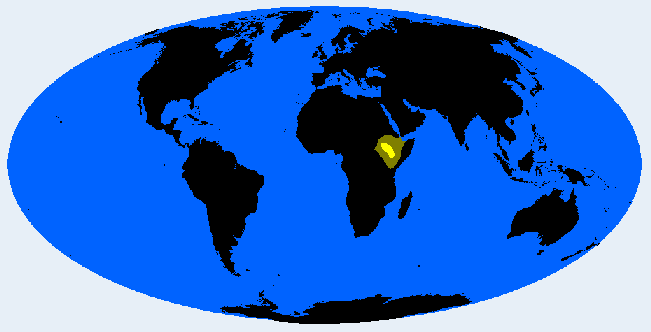Description:
Isolated type of Southwestern Ethiopia and Northern Kenya, probably belonging to a group of ancient Ethiopids. Probably a relict of Pre-Neolithic periods. Most common in speakers of the Omotic languages, e.g. Ari/Aari, Banna, Hamer, Karo, Turmi, and Erbore. The name derives from the Omo Valley of Southern Ethiopia.Physical Traits:
Dark brown skin and kinky-curly hair. Ectomorph to mesomorph, brachyskelic, medium to rather tall height. Usually dolichocephalic, orthocranic, and relatively long faced. Mildly platyrrhine nose. The lips are full and cheek bones often prominent. Body hair is scant.Literature:
Pagani et al. 2012 found Omotics to have a great distinctiveness and their own genetic cluster, e.g. the Aari Blacksmith. The groups were hardly classified by early anthropologists. The first who studied them was Montandon (1913), who measured the Bench. Schulz-Weidner (1952) reports metrics of the Changama and Male. Biasutti (1967) regarded them a basal group, distantly linked to Ethiopid and Nilotid.






